As Standard Chartered launches digital assets trading for institutional clients and is set to become one of the first UK banks to apply for an EU Markets in Crypto Assets Regulation (MiCA) licence, Capital Pioneer spoke to Waqar Chaudry, its head of digital assets, financing & securities services, to find out the story so far…
Capital Pioneer: How has Standard Chartered’s digital asset strategy evolved?
Waqar Chaudry: Our initial focus was safeguarding assets. We now provide custody services within Standard Chartered and, driven by demand, have expanded into servicing tokenised assets—both creating tokens from traditional assets and integrating external tokenised assets into our ecosystem. This trend will continue, leading to the addition of new coins and partnerships. We already work with Franklin Templeton, OKX and TP ICAP, among others, enabling clients to access custody services and, potentially, financing. Beyond custody, we’re developing stablecoin-related services, staking and stablecoin minting.
CP: What role does regulation play in shaping market structure and success?
WC: Regulation is central to capital markets. Regulators ensure market security but don’t dictate specific business decisions—they establish principles, and the market operates within them. Ultimately, customers drive the direction of the business. Liquidity fosters further liquidity, so success depends on accessibility, regulation, and ecosystem integration. Decentralisation is reshaping the financial landscape, bringing new entrants into payments and acquisitions by digital asset firms. Clients and innovators determine market structure and success.
CP: How do blockchain and public infrastructure unlock market opportunities?
WC: Blockchain and DLT offer a genuinely public infrastructure. By engaging with public blockchain networks, we’ve accessed markets early and collaborated with partners we otherwise might not have. Regulation plays a decisive role—recent developments in the US exemplify this. When regulators support market growth, innovators step in and create value. Our approach to integration aligns with our role as a large sub-custodian. We provide sub-custody services to global custodian institutions and aim to extend that expertise into digital assets. The model used for traditional asset sub-custody can be replicated for digital assets.
CP: What does the future look like for custody, infrastructure and institutional support?
WC: While some providers seek technological solutions to improve blockchain interoperability, broader standardisation will emerge over time—potentially driven by established players like Swift. Every entity has its place: banks, payment providers, merchant acquirers and Swift each play a distinct role. If an organisation fails to keep pace with technology, the market will eventually force change, or it risks becoming obsolete. Custody and self-custody depend on the nature of the assets. Decentralised assets require protection, and without operational, regulatory and capital controls, they carry significant risk. Recent positive cases illustrate how capital buffers can support clients, but there have been failures which highlight the dangers when safeguards are lacking. Holding assets with an exchange, without the backing of a regulated institution like a bank, remains an option for those with a higher risk appetite.
CP: Where do you see technological progress being made on the existing arrangements within digital assets?
WC: While hot wallets have their place in certain technologies, for enhanced security we maintain full cold storage solutions. Proper institutionalisation of digital assets requires the support of a G-SIB to provide stability and ensure asset safety. Custody has evolved significantly since the 2008 financial crisis. Previously seen as a back-office function, it has moved up the value chain, playing a more central role in asset servicing. Regulatory frameworks like Europe’s MICA regulation reinforce this shift by introducing reporting obligations, ESG requirements, and asset safety measures. We still operate primarily in the middle-to-back office, but advancements in blockchain and DLT are bringing us closer to front-office functions. The ability to instantly value, settle, and transfer assets will continue to grow, integrating custody more deeply into overall financial operations.
CP: Apart from straight-up efficiency, what are the other benefits promised by tokenisation and a digital asset landscape?
WC: Better data, standardisation and asset unlocking present enormous opportunities. Standardisation of ESG reporting, for instance, could dramatically enhance transparency and efficiency through more accurate analysis of large data sets. Our data strategy is fundamental to custody services. We are investing heavily in infrastructure to aggregate and process information from exchanges, CSPs, clients and third-party sources. Adding value beyond raw data is essential. Digital assets are simply another asset class we will integrate within our broader banking framework, with existing infrastructure supporting the expansion of our custody business.
CP: How does Standard Chartered intend to develop its digital asset strategy?
WC: Our ventures group, SC Ventures, was created to innovate externally while staying within the structure of bank. We wanted to avoid burdening legacy technology teams managing core infrastructure and enable faster innovation outside. Additionally, licensing requirements and the agility needed to operate in multi-jurisdictional environments favoured an external approach, allowing us to move differently than a traditional bank. This strategy has proven effective, with our ventures continuously launching and gaining market traction. Take Zodia Markets, for example—initially structured as a broker-dealer, it has now evolved into a payment specialist using stablecoins. This reflects a broader truth about digital assets: there’s never a fixed end state. You start somewhere and adapt.



